The art of the beautiful game: football moves off pitch and into the museum

Football has many guises. It is a pastime where schoolboys scrape knees in a courtyard; a tear-jerking symbol of national pride; a multi-billion dollar industry with corporate interest; a global franchise with a zealot-like devotion to the athletes – the list goes on. And yet, no matter what form it takes, the sport still embodies a common vocabulary, uniting people from different cultures and nations.
The show ‘The World’s Game: Fútbol and Contemporary Art’, on view at Pérez Art Museum Miami (PAMM) until 2 September, explores football’s many definitions. Overlapping with the 2018 FIFA World Cup in Russia, the exhibition investigates soccer’s role in art through the works – including photography, sculpture, and painting – of more than 30 artists such as Andy Warhol, Maria Lassnig, and Antoni Muntadas.
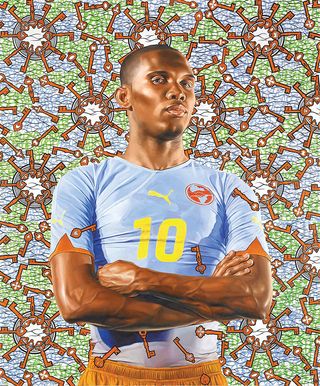
Samuel Eto’o, 2010, by Kehinde Wiley, oil on canvas.
Warhol’s 1978 portrait of the Brazilian football star Pelé, part of the artist’s Athletes series, considers the God-like status that many athletes assume. Brazilian artist and photographer Vik Muniz similarly depicts the sporting hero in his 2003 piece Edson (Pelé) from Pictures of Magazines, grinning next to Warhol’s. The depiction of athletes as adored and influential figures of pop culture is compounded by American painter Kehinde Wiley’s portrait of renowned Cameroonian player Samuel Eto’o, who won the African Player of the Year award a record of four times. Eto’o stands in his portrait (above) powerful, radiating, larger than life.
Other artists question to what extent football can be considered a ‘game’. Taryn Simon’s large-scale photograph from her series Paperwork and the Will of Capital (2015) focuses on the floral centrepiece that adorned the FIFA negotiating table when the sporting organisation agreed to outlaw third-party ownership of economic rights of football players. Paul Pfeiffer, on the other hand, injects amusing absurdity into the exhibition with his video Caryatid (2003), which features isolated footage of players ‘diving’ in attempts to gain penalties. The sport is stripped of solemnity; a quality more noticeable when gone.
The exhibition’s variety competes with the diverse definitions of football itself. It investigates how art can intersect with sport, two categories that can sometimes feel diametrically opposed. PAMM director Franklin Sirmans notes the exhibition ‘presents the art of the game as much as the game of art’.
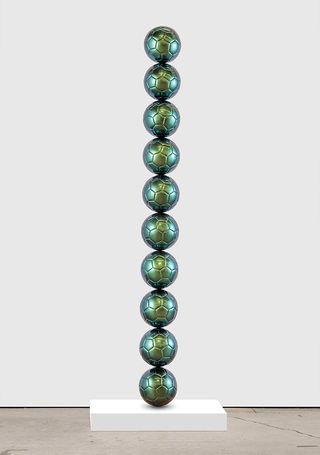
Endless Column III, 2017, by Hank Willis Thomas, fibreglass, chameleon auto paint finish. Courtesy of the artist and Ben Brown Fine Arts, London. © Hank Willis Thomas.
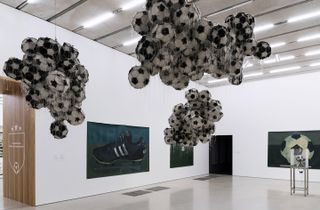
Installation view of ‘The World’s Game: Fútbol and Contemporary Art’ at Pérez Art Museum Miami.
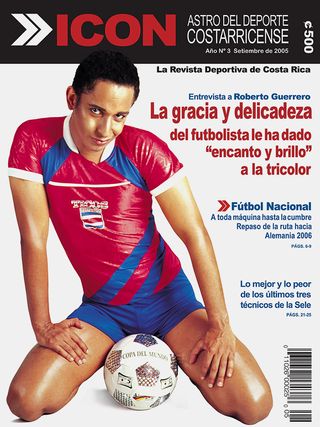
El futbolista delicado de la tricolor, 2005, by Roberto Guerrero, digital print on polystyrene.
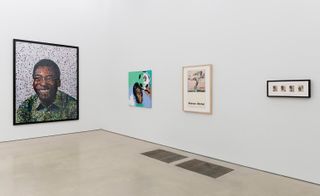
Installation view of ‘The World’s Game: Fútbol and Contemporary Art’ at Pérez Art Museum Miami.
INFORMATION
‘The World’s Game: Fútbol and Contemporary Art’ is on view until 2 September. For more information, visit the PAMM website
ADDRESS
Pérez Art Museum Miami
1103 Biscayne Blvd
Miami
Wallpaper* Newsletter
Receive our daily digest of inspiration, escapism and design stories from around the world direct to your inbox
-
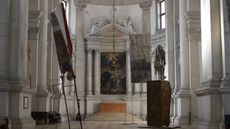 Berlinde De Bruyckere’s angels without faces touch down in Venice church
Berlinde De Bruyckere’s angels without faces touch down in Venice churchBelgian artist Berlinde De Bruyckere’s recent archangel sculptures occupy the 16th-century white marble Abbazia di San Giorgio Maggiore for the Venice Biennale 2024
By Osman Can Yerebakan Published
-
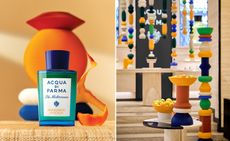 Discover Acqua di Parma’s new Mandarino di Sicilia fragrance at Milan Design Week 2024
Discover Acqua di Parma’s new Mandarino di Sicilia fragrance at Milan Design Week 2024Acqua di Parma and Fornice Objects bring the splendour of Sicilian mandarin fields to Milan to celebrate new fragrance Mandarino di Sicilia
By Simon Mills Published
-
 First look at Samba Room, London’s innovative cocktail lounge packed with Brazilian energy
First look at Samba Room, London’s innovative cocktail lounge packed with Brazilian energyLondon’s Samba Room, an extension of SushiSamba, is a dynamic bar, lounge and private dining space designed by Fabled Studio
By Tianna Williams Published
-
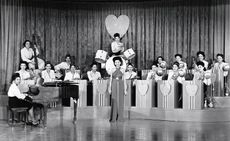 Detroit Institute of Arts celebrates Black cinema
Detroit Institute of Arts celebrates Black cinema‘Regeneration: Black Cinema 1898-1971’ at the Detroit Institute of Arts (DIA) brings lost or forgotten films, filmmakers and performers to a contemporary audience
By Anne Soward Published
-
 BLUM marks 30 years of Japanese contemporary art in America
BLUM marks 30 years of Japanese contemporary art in AmericaBLUM will take ‘Thirty Years: Written with a Splash of Blood’ to its New York space in September 2024, continuing its celebration of Japanese contemporary art in America
By Timothy Anscombe-Bell Published
-
 Todd Gray’s sculptural photography collages defy dimension, linearity and narrative
Todd Gray’s sculptural photography collages defy dimension, linearity and narrativeIn Todd Gray’s New York exhibition, he revisits his 40-year archive, fragmented into elaborated frames that open doors for new readings
By Osman Can Yerebakan Published
-
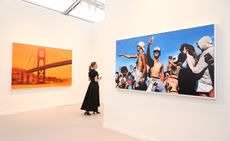 Frieze LA 2024 guide: the art, gossip and buzz
Frieze LA 2024 guide: the art, gossip and buzzOur Frieze LA 2024 guide includes everything you need to know and see in and around the fair
By Renée Reizman Published
-
 Peter Blake’s sculptures spark joy at Waddington Custot in London
Peter Blake’s sculptures spark joy at Waddington Custot in London‘Peter Blake: Sculpture and Other Matters’, at London's Waddington Custot, spans six decades of the artist's career
By Hannah Silver Published
-
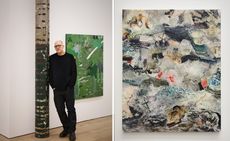 New York artist Christopher Astley showcases an alternative natural world
New York artist Christopher Astley showcases an alternative natural worldAt Martos Gallery in New York, Christopher Astley’s paintings evoke an alternative natural world and the chaos of warfare (until 16 March 2024)
By Tianna Williams Published
-
 Oozing, squidgy, erupting forms come alive at Hayward Gallery
Oozing, squidgy, erupting forms come alive at Hayward Gallery‘When Forms Come Alive: Sixty Years of Restless Sculpture’ at Hayward Gallery, London, is a group show full of twists and turns
By Hannah Silver Published
-
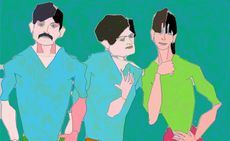 The Whitney plots Harold Cohen’s artistic AI adventures
The Whitney plots Harold Cohen’s artistic AI adventures‘Harold Cohen: AARON’, at the Whitney Museum of American Art celebrates the artist’s software – the earliest AI program for artmaking – as an artwork in its own right
By Hannah Silver Published